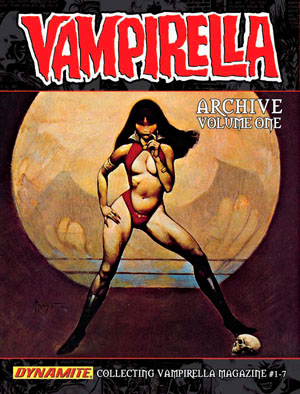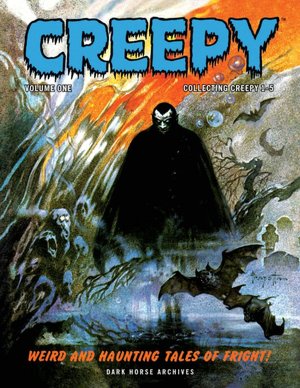 |
| The Five Robins |
Did You Know...
Robin the Boy Wonder. The first and the most iconoclastic of all the Golden Age superhero sidekicks. Sure, there was Bucky to Captain American, Sandy to the Sandman, Toro to the Human Torch, Kato the Green Hornet, but Robin arrived before all of them. All who came after were mere imitations. Robin was the real deal.
Robin first appeared as a partner to Batman in April 1940 in Detective Comics #38. Batman himself had only just appeared a few months earlier in May 1939 in issue #27. So the Dark Knight was solo for only eleven issues. Then Robin arrived to be his sidekick and partner in crime fighting.
 |
| Robin's 1st Appearance: Detective Comics #38 |
For over 40 years, the first and only Robin was Dick Grayson. Dick belonged to a family of acrobats called, "The Flying Graysons," who performed in the Haly Circus. Dick overheard two gangsters who had tampered with the trapeze, but before he could act, the trapeze fails and his parents fall to their death. Batman appears to him and together they work to capture the gangsters' crime boss, Tony Zucco. Batman reveals how he had also witnessed the murder of his own parents and asks the eight year-old to become his ward and partner. Dick accepts and thus "Robin" is born. Throughout the 1940s and 1950s, this team was popularly known as "The Dynamic Duo." In the 1980s, Dick Grayson (at the age of 19) leaves the company of Batman and pursues a new crime fighting career as the superhero, Nightwing. (Bonus points for the person who can tell me which superhero suggested the name "Nightwing" to Dick.)
 |
| Jason Todd as Robin |
Jason Todd made his first appearance in Batman #357 in March 1983 and was introduced as the second Robin in Detective Comics #526. Though popular to Robin fans originally, after the miniseries, "Crisis on Infinite Earths," in 1985, his character was revamped and his popularity as Robin diminished rapidly. Fans seemed to reject him as Robin. In response, DC Comics decided to let the readership decide the fate of Jason Todd. In 1988, they set up two 1-900 numbers. Depending on which number was called in a specified 36 hour period, Jason would either live or die. The vote came in. 5,271 voted that Jason Todd should live and continue as Robin. 5,343 voted that Jason Todd must die. Thus his fate was sealed. In a four-part story in Batman, issues 426-429, which was entitled, "A Death in the Family," Jason Todd came face to face with the Joker, who beat him and left to die in a fire. The deed was done.
In 2005, a character known as the Red Hood in Batman #638 was revealed as a resurrected Jason Todd. His return was then later explained in Batman Annual #25 in 2006. Currently, Jason Todd is alive and well in the DCU, but not as the character, Robin.
The third Robin, Tim Drake, was introduced in 1989 in "Batman: A Lonely Place for Dying," in which he introduced himself to Dick Grayson, impressing him with his skills. Apparently, Tim had been a very young boy who attended the circus performance in which Dick's parents were murdered. A bond formed between the two. Soon, Alfred Pennyworth, Bruce Wayne/Batman's manservant, was advocating for Tim to become the new Robin. Eventually, Batman accepted Tim as his new partner.
 |
| Tim Drake as Robin (note the new uniform) |
In the course of being Robin from 1989-2009, Tim Drake's mother died and his father disabled. For a period, he retired from being Robin out of consideration of his father. He would later return to the role after his father was killed by Captain Boomerang.
Following the deaths of both his parents, Bruce Wayne adopted Tim as his son, just as he had with Dick Grayson.
During his time as Robin, he had a girlfriend by the name of Stephanie Brown. After Robin "retired" as Robin, Stephanie stepped-in.
 |
| Stephanie Brown as Robin in 2004 |
Stephanie Brown was first introduce in a story arc in Detective Comics #647-649, 1992, which featured the crimial, the Cluemaster. Stephanie was his daughter. She adopted the persona of "The Spoiler" to spoil her father's evil plans.
She was brought back to the DCU the next year, 1989, when Tim Drake got his own title, Robin. The Spoiler was a kind of nemesis to Robin and Stephanie was the love interest to Tim. Needless to say, it was a complicated relationship.
When Tim retired as Robin, at his father's request, Stephanie stepped in. With her own costume, she sneaked into the Batcave and confronted Batman, arguing that she should be the next Robin. Batman was hesitant, but did agree. He put her through months of training before allowing her to assume the role. When she finally became Robin, she did so with a costume that befitted her role.
As Robin, she was portrayed as much more reckless and careless than Tim. Batman doubted that she measured up to the standards of her position. Finally, he fired her for disobeying his orders on two occasions. Trying to redeem herself, she stole plans from Batman that resulted in an all-out gang war in Gotham. During the fighting, Stephanie was captured and severely beaten. Even though she managed to escape, she later died of her injuries with Batman at her side.
In 2008, Stephanie reappears. Her death had been faked in order to save her life. She later became the fifth Batgirl (or fourth depending upon how you figure continuity). She had her own series from 2009-2011.
After Stephanie's "death," Tim Drake returned to the role of Robin until Batman was killed at the hands of Darkseid in "Final Crisis." Then then adopted a new persona as the Red Robin.
 |
| Dick Grayson and Damien Wayne |
Following the death of Batman in Final Crisis, a miniseries followed in 2009 called, "Battle for the Cowl" in which several people vied for Batman's identity. Dick Grayson, the first Robin, then picked up the mantle of the Dark Knight and took on Batman's son, Damien Wayne, as the fifth and current Robin.
Damien is the biological child of Bruce Wayne and Talia al Ghul. Talia is the daughter of immortal, eco-terrorist, Ra's al Ghul. Damien was genetically engineered from the genes of Bruce and Talia, spending his gestation in a laboratory. He was raised by Talia and trained by the League of Assassins. He was both bred and trained to be a killer - the very opposite of his father, who refuses to take a life. As a pre-teen adolescent, Talia reveals his existence to Bruce and eventually gives Damien to him to raise. After Batman's death in "Final Crisis," when Dick Grayson assumes the cowl, Damien becomes what he had long wanted to be - Robin. The relationship between the first-Robin and the current one was dynamic. Damien grew to truly admire Dick and his abilities. With the return of Batman, Dick returned to his role as Nightwing, and Bruce put on the cowl again. Damien remained with him as both Robin and son.
 |
| Batman and Robin, the Boy Wonder! |
Thus concludes the tale of the five Robins. The reason that I said in the title that there were just four is that some fans dismiss Stephanie's short tenure in the role - that she really wasn't a "true" Robin. But in my opinion, she made a fine Robin and an even better Batgirl. With the exception of Jason Todd, I have liked all the Robins, but in my heart and mind, there will always be only one true Robin - Dick Grayson. He was the greatest of all.
Peace Out,
Steve R.
(This article is dedicated to Steve K., who suggested the topic.)













































